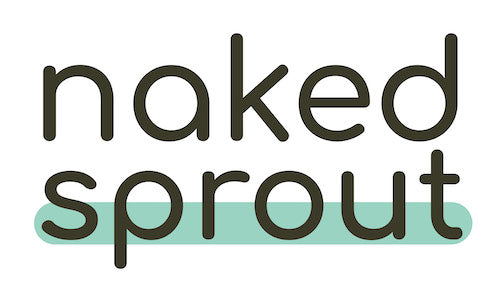Are Sustainable Products More Expensive?

In recent years, the conversation around sustainability has intensified, with more people seeking to adopt environmentally friendly lifestyles. We’re seeing this change play out at Naked Sprout, and we’re part of it ourselves, as our customers look for sustainable alternatives to traditional toilet rolls, tissues, and kitchen roll.
We’re always making the case for more sustainability for everyone - but a prevailing myth suggests that sustainability is a luxury, only for those with deeper pockets.
Today, we're here to explore the true cost of sustainable products.

The Cost of Sustainability
First off, let’s bust one myth. If a sustainable product is more expensive, it’s probably not because the company is profiteering.
The profits accrued by the largest brands doing the most environmental damage are far, far higher than those who are looking to reduce their impact. In manufacturing, the cheapest way is usually the standard way. And as we all know, the standard ways of making products have been doing a lot of damage. The plastic, greenhouse gases, and toxic chemicals that come from traditional manufacturing methods are all polluting our environment, and the world’s biggest manufacturers are some of the biggest culprits.
Sustainable manufacturers try to break with these norms, and so the first green products in a sector will usually have higher overheads. Ethical sourcing and transportation of raw materials, fair labour practices, and eco-friendly materials cost more than just doing business as usual.

How do Sustainable Products Get Cheaper?
The good news is that as the market for sustainable products grows it matures. As technology advances and the demand for sustainable options grows, the cost of making them drops. Here's how this happens:
1. Economies of Scale
This is the big one. As more consumers opt for sustainable products, companies are able to produce these goods in larger quantities, lowering the unit cost. Scales of production that simply weren’t feasible in, say, electric vehicles a decade ago are becoming a reality today, lowering the price for manufacturers and the price for consumers.
2. Technological Advancements
Innovations in sustainable materials and production processes have significantly reduced costs. For instance, the price of solar panels has plummeted 90% over the past decade, making renewable energy more accessible than ever.
3. Incentives and Subsidies
Many governments now offer incentives for purchasing sustainable products. In the UK, for example, home owners can claim up to £7,500 to install heat pumps, a more sustainable and efficient form of central heating. Incentives like this can help bridge the price gap between conventional and sustainable options.
Long-Term Cost Savings
Sustainable products often lead to long-term savings. An LED light bulb, for example, may cost more upfront than a traditional bulb, but it uses less energy and lasts much longer, around 50,000 hours of light, compared to 750 hours for traditional incandescent bulbs! This means lower energy bills, and fewer replacements over time.

Case Studies: Sustainable Products Winning the Price War
Now that we’ve considered how sustainable products get less expensive, let’s look at some real-world examples of products that are turning the tide on cheap, polluting, and unsustainable manufacturing methods.
1. Clothing
Sustainable fashion brands initially faced criticism for high prices. However, as demand has grown the cost of sustainable fabrics, like organic cotton and hemp, is starting to drop. And greater awareness of labour conditions means that fast fashion brands, who often benefit from unjust labour practices face more pressure from customers. All of this is slowly changing the clothing industry to one where more sustainable brands can thrive.
2. Food
Organic foods were once significantly more expensive than their conventional counterparts. Today, with organic farming becoming more widespread, the price gap has narrowed considerably. In some cases, organic products are even cheaper, especially when purchased locally or in season.
3. Tissue Products
We couldn’t make this list without a nod to our own sector - eco-friendly tissue products! The first wave of environmentally conscious manufacturers started making tissue products from bamboo in the early to mid 2010’s. At Naked Sprout we have taken this baton and run even further with it, using only sustainable materials, manufacturing using 100% renewable energy, and even climate labelling our products.
Thanks to the efficiency of our operations we’ve been able to do this while matching (and in many cases going below) the prices of brands who are manufacturing the traditional way.

Conclusion:
Sustainable products are growing more popular, and more accessible, every year. With advancements in technology, economies of scale, and shifting consumer preferences, eco-friendly options are increasingly affordable. When we look at the long-term savings that come from more thoughtful manufacture, and the broader impacts of our purchases, sustainability appears less of a luxury and more of a necessary part of a future with less unnecessary waste and expense.
The future is green, and thankfully, it's within reach for more and more people every day.
Want to make a simple, sustainable (and affordable!) switch?




